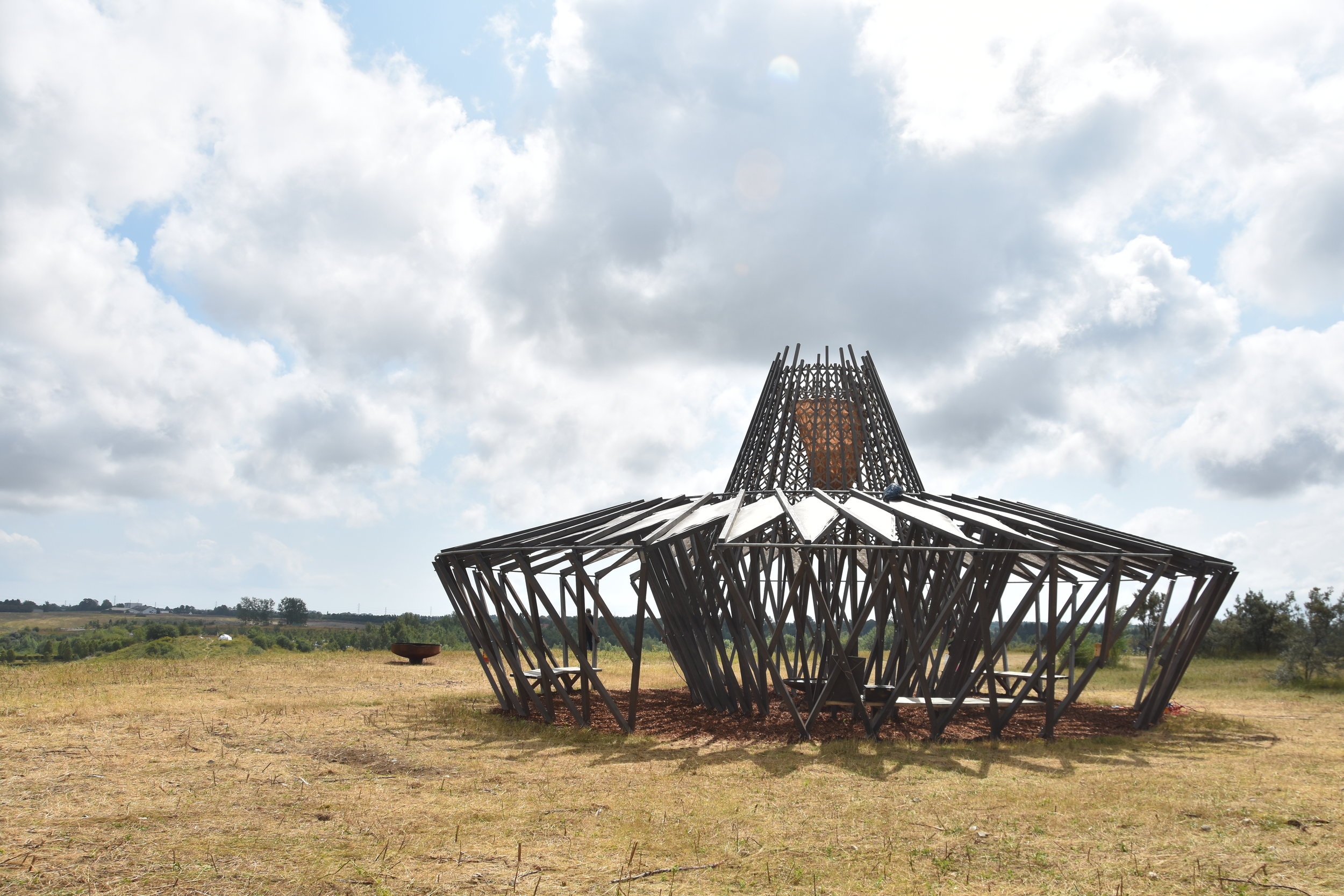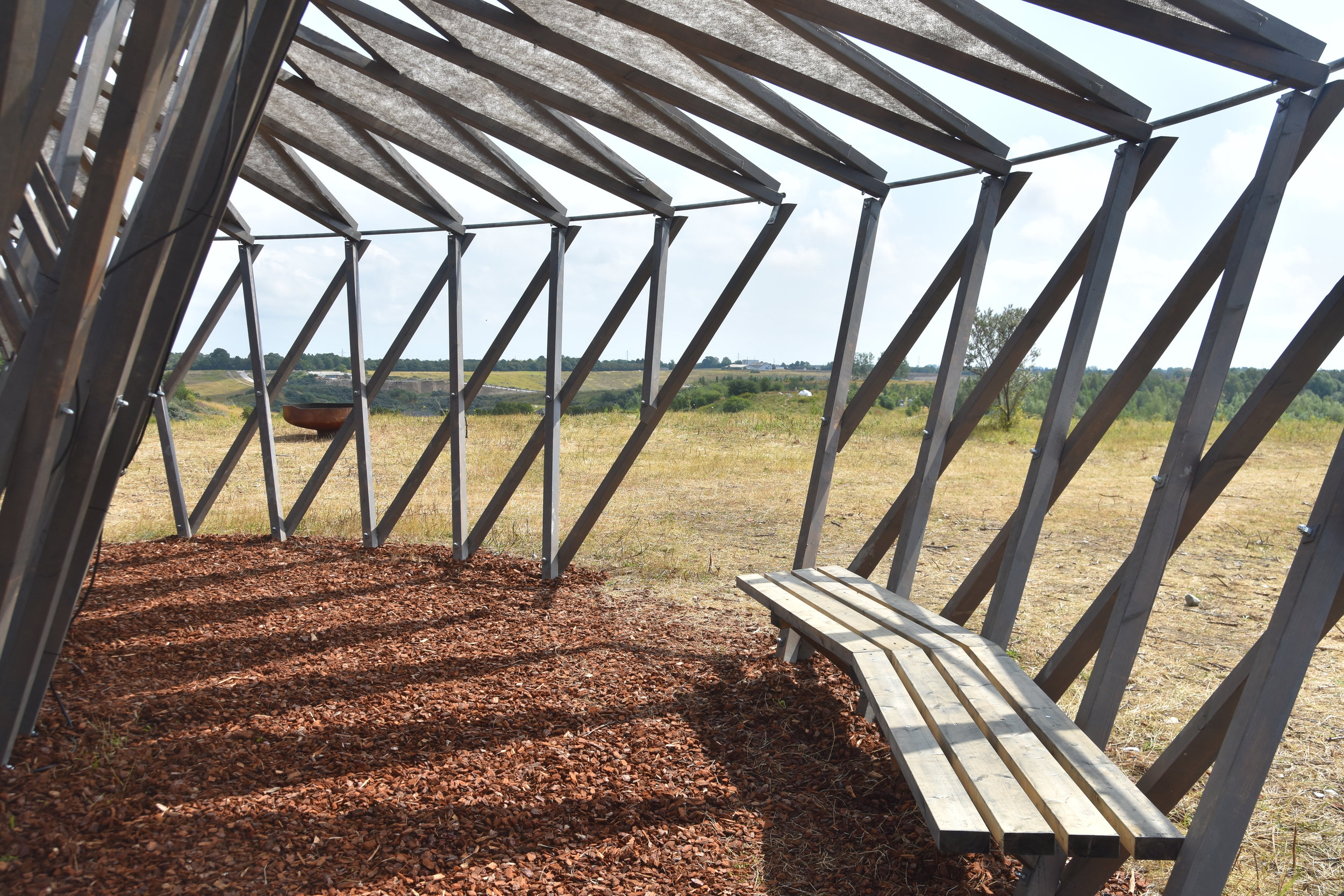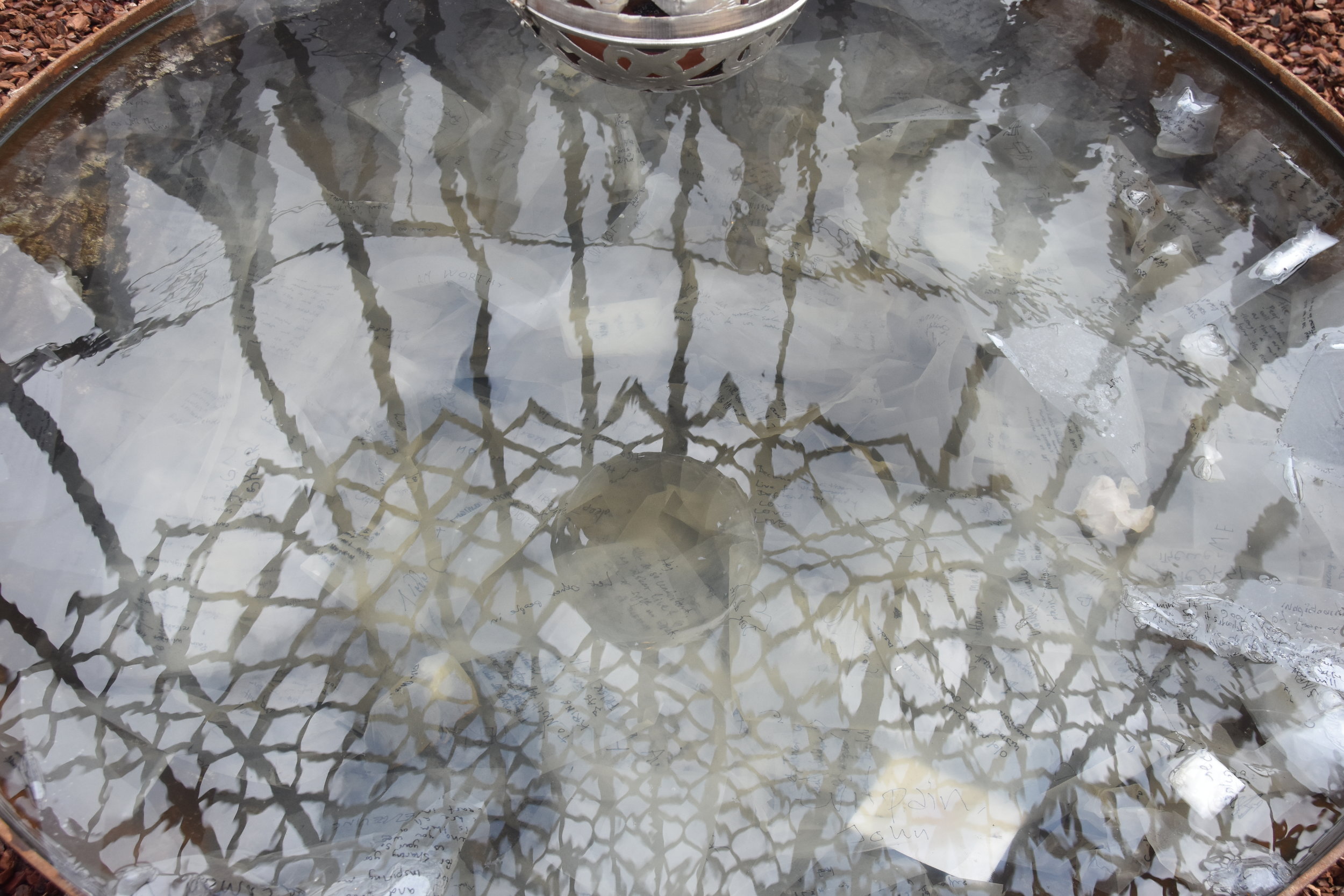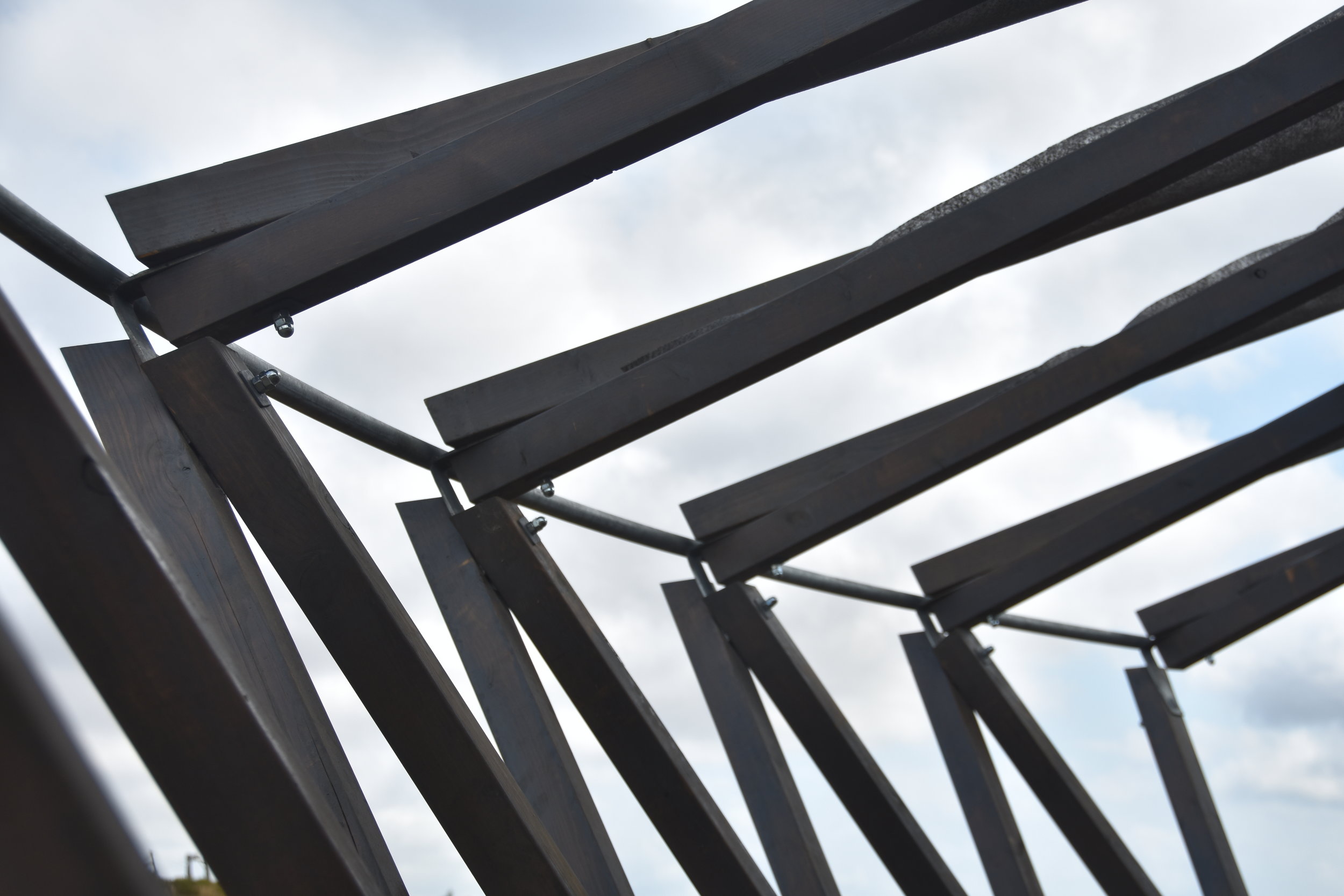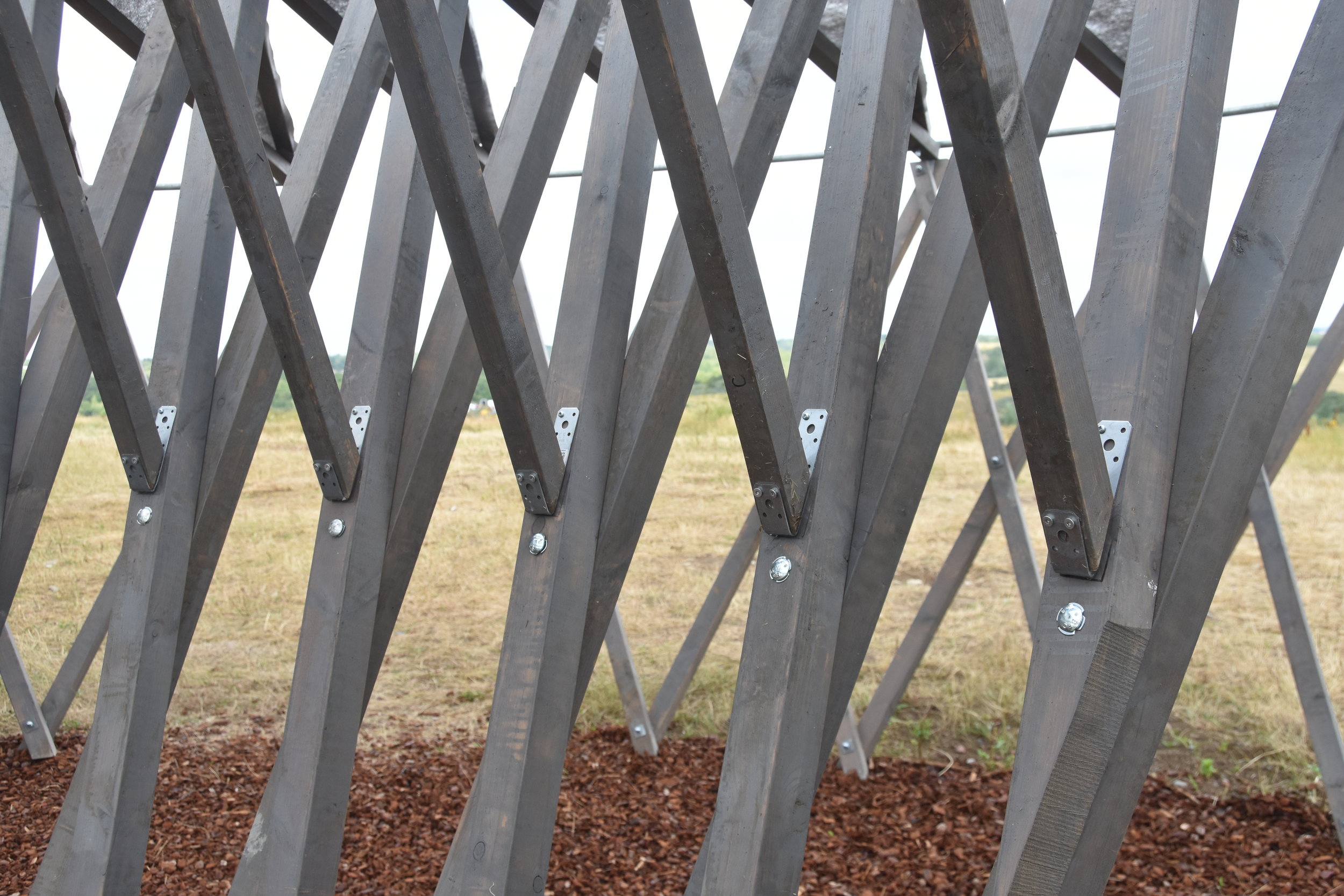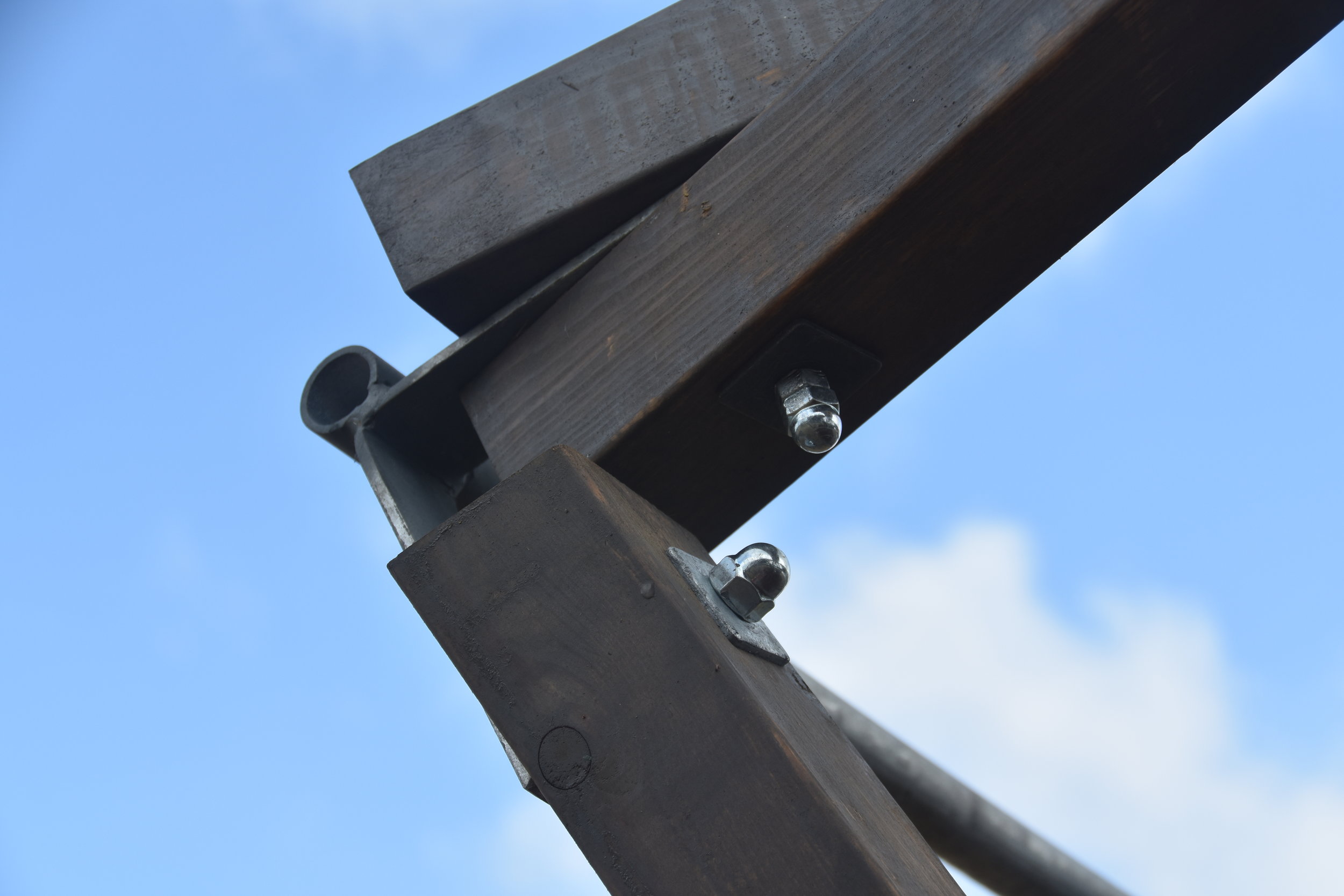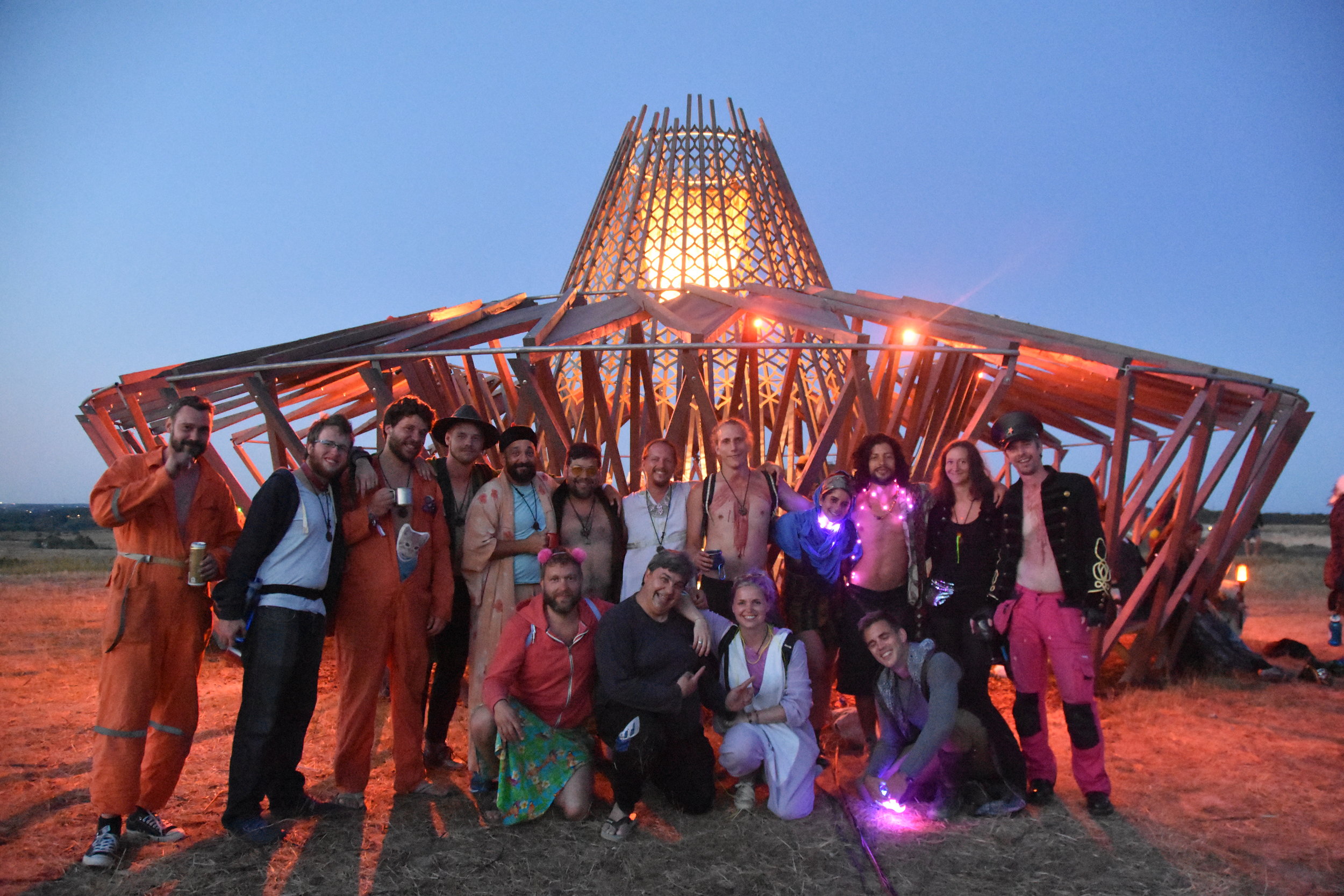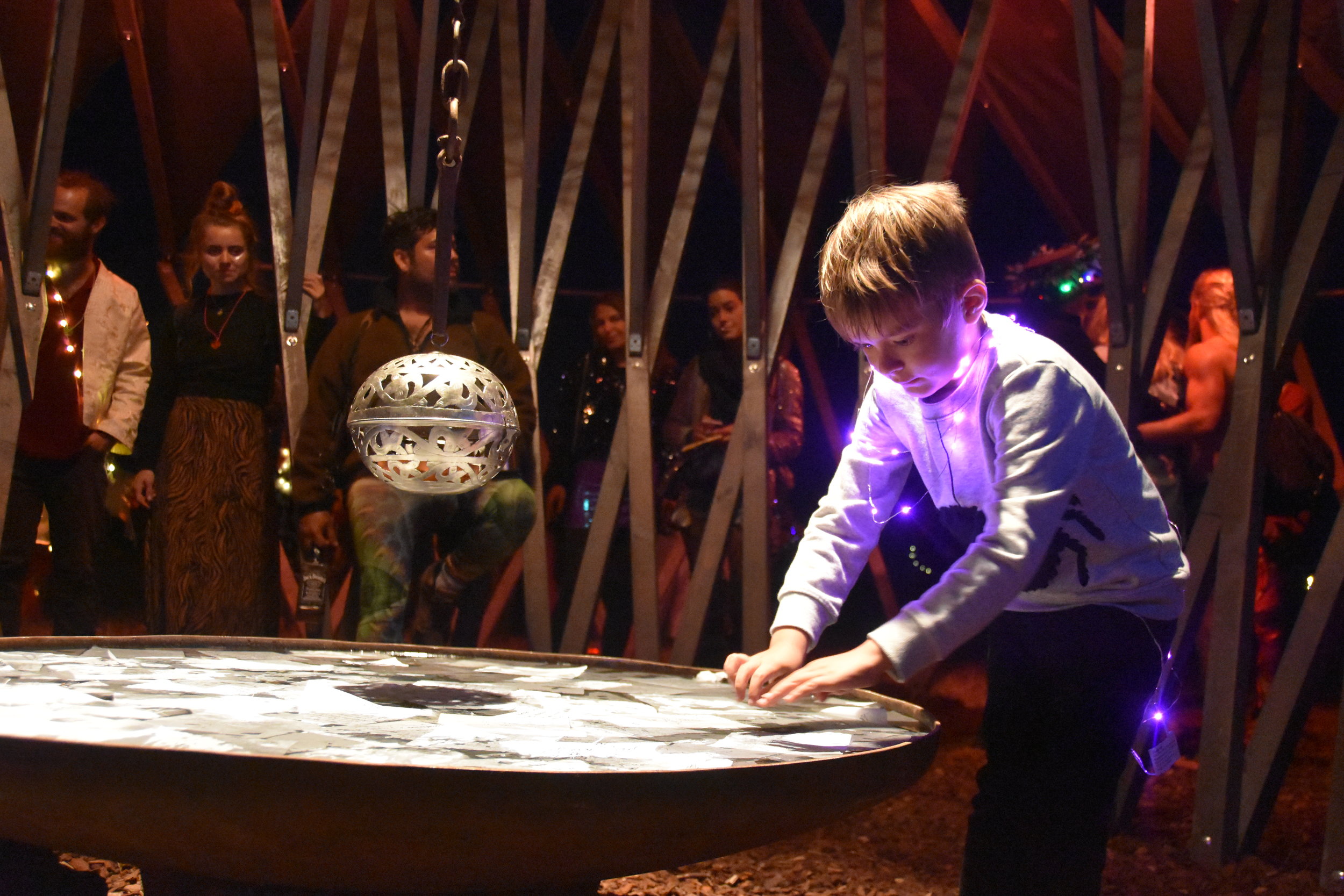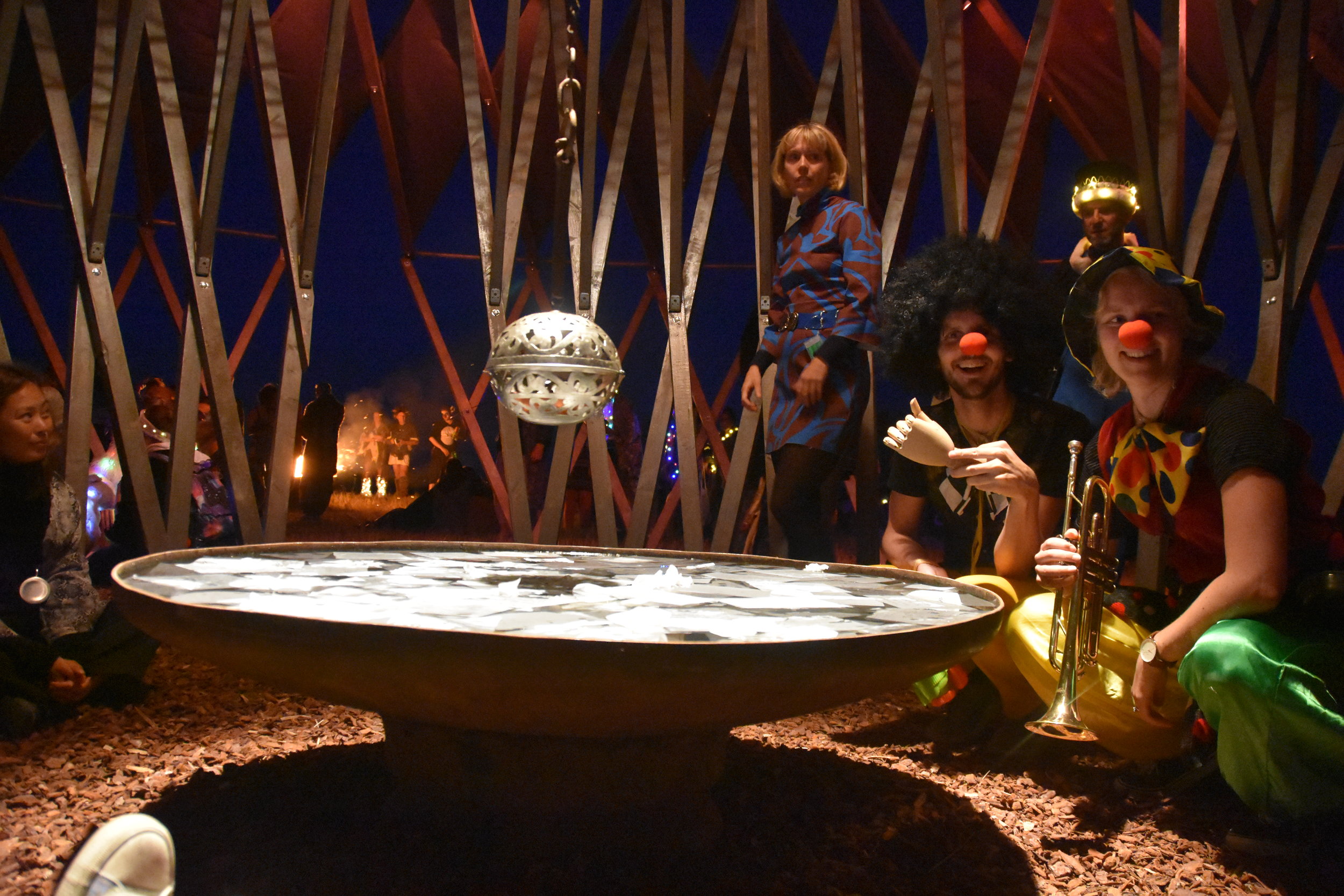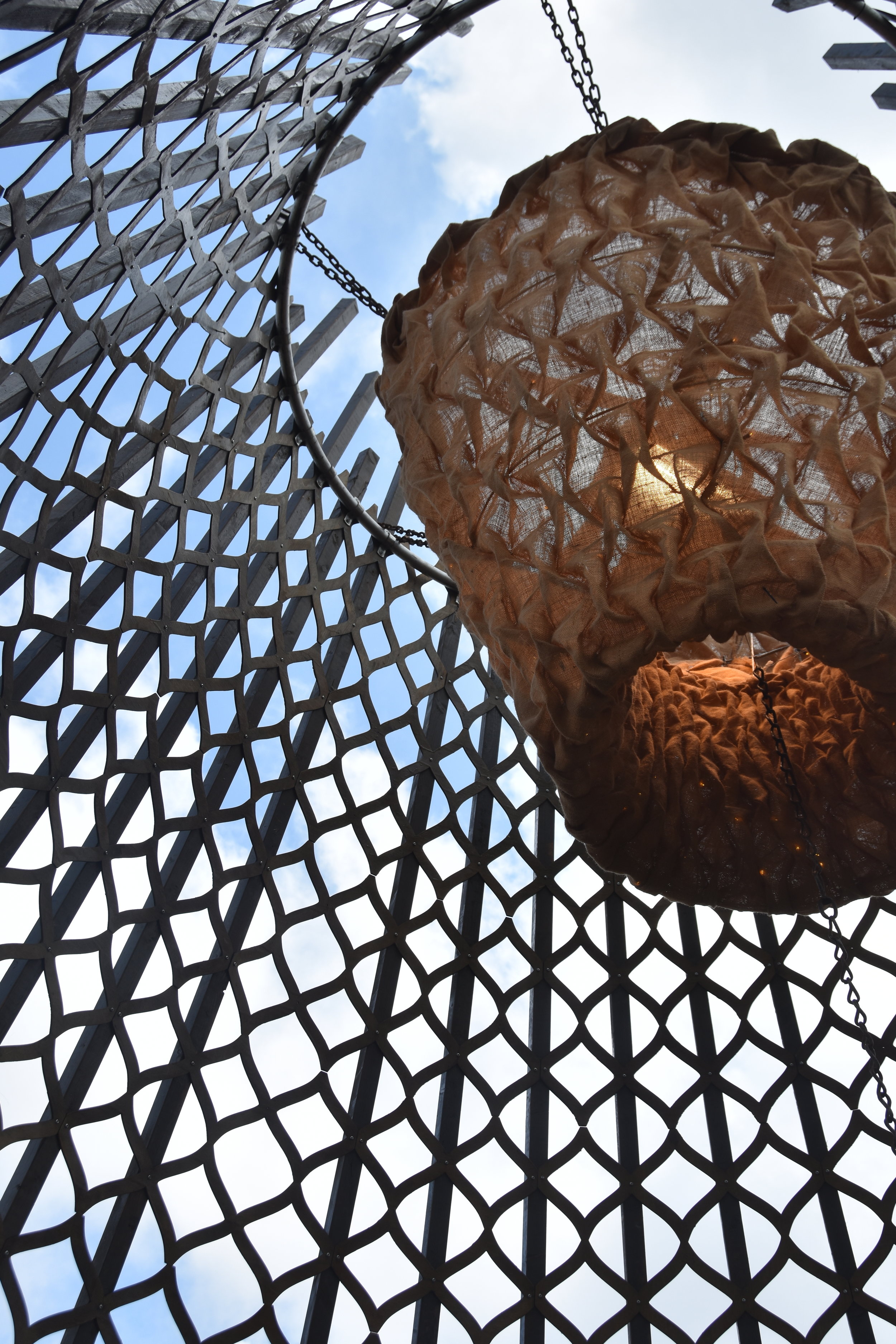Photo courtesy of Nicolas Padfield
Photo courtesy of Bonnie Krantz
Photo courtesy of Bonnie Krantz
The temple of tokamak
The Borderland 2019
Project Lead: Annie Locke Scherer
Leadman: Birk Granberg
Temple crew: Jonathan Raffin, Arturo Escudero, Absalof, Hampus Bremberg, Martin Andersson, Bonnie Krantz, Yasmina Debbagh, Jonas Klausen, Cecilia Johansson, Linus Hagberg, Hugi Ásgeirsson, Jakob Sköte, Hanakin Henrikssom, Konrad Leffler, Colin O’Keefe, James Solly, Luis Orozco, Alex Larsen
The Temple of Tokamak is a permanent installation, situated on the Borderland ridge in Hedeland, Denmark. Based on the same ideas of the temples of Burning Man, the temple is traditionally is a place of contemplation, solace, grief and closure; a place to let go of something you have been holding onto and to heal. While at Burning Man participants write on the structure and burn it at the end of the event week, the Borderland reframed one of the ten principles of “leave no trace” to be “leave a better trace.” Rather than burning the structure, participants were encouraged to write on pieces of rice paper, and leave them in the water-filled altar to dissolve. After the event was over we held a closing ceremony to combine these dissolved papers with seeds, and gave them to Borderlings to bring home to plant. This was a symbolic act of turning grief and something holding you back into something beautiful and new.
The main premise of this design was a Tokamak reactor, a torus-shaped device that generates a powerful magnetic field to create fusion. This is a symbol of the unifying forces of humanity that bring us together. The Temple of Tokamak is constructed of tar-coated wood beams and custom metal piping and brackets. The tower is made of a weaving pattern of laser-cut and sealed plywood. The smocked burlap chandelier is custom-made by Annie Locke Scherer and the altar is made from re-purposed large tank cap and truck tire rims. This project was fully funded by Borderland Dream Grants and pre-fabricated at Blivande makerspace in Stockholm, Sweden.
Photos courtesy of Annie Locke Scherer
Photo courtesy of Yann Houlberg Andersen




